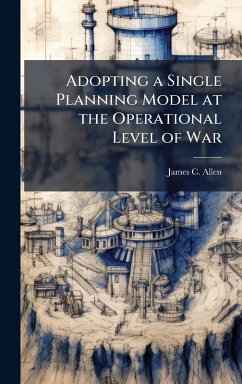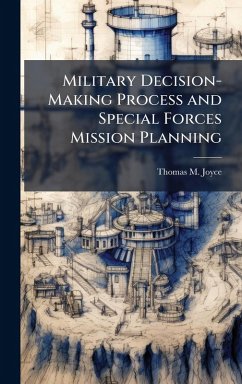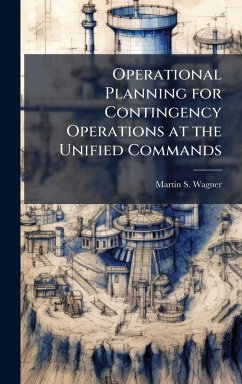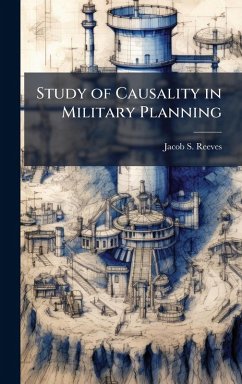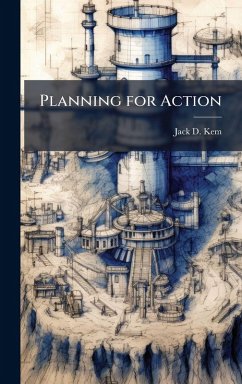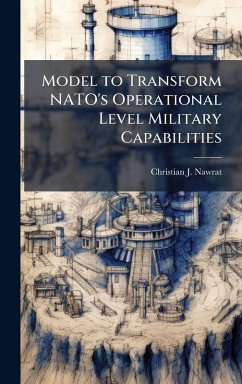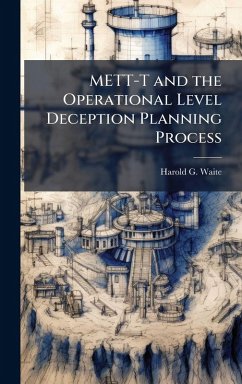
Capabilities-Based Planning
Versandkostenfrei!
Versandfertig in über 4 Wochen
27,99 €
inkl. MwSt.
Weitere Ausgaben:

PAYBACK Punkte
14 °P sammeln!
In 1999 GEN Eric Shinseki, Army Chief of Staff, initiated the Army Transformation program attempting to both enhance the timeliness of employment for ground forces and to leverage technology to maintain our ground dominance.. The first phase of the transformation consists of fielding initial brigade combat teams (IBCTs) at Fort Lewis, Washington. These IBCTs will develop the operational and organizational model for follow-on brigades using readily available equipment. The second phase consists of fielding an interim division (IDIV) using a yet-to-be-determined interim armored vehicle (IAV). Th...
In 1999 GEN Eric Shinseki, Army Chief of Staff, initiated the Army Transformation program attempting to both enhance the timeliness of employment for ground forces and to leverage technology to maintain our ground dominance.. The first phase of the transformation consists of fielding initial brigade combat teams (IBCTs) at Fort Lewis, Washington. These IBCTs will develop the operational and organizational model for follow-on brigades using readily available equipment. The second phase consists of fielding an interim division (IDIV) using a yet-to-be-determined interim armored vehicle (IAV). The third phase consists of the total transformation to the Objective Force. The Objective Force requirement is to have a combat brigade on the ground within 96 hours after liftoff, a division within 120 hours, and five divisions within 30 days. Sometime around the year 2003, the Army can expect to have a mixture of legacy forces such as the 4th Infantry Division (Mechanized) and interim forces including the IBCT and IDIV. Each of these forces will have unique capabilities and employment requirements to maximize its use. The challenge for the Army will be to develop missions and orders that maximize the combat power of each type of unit. The monograph determines if current U.S. Army planning doctrine develops courses of action that fully utilize the capabilities of Army forces from legacy to interim forces to maximize combat power as outlined in FM 3-0, Operations.. The 4th Infantry Division (Mechanized) and a mechanized brigade from the division are used to represent legacy forces. The IBCT and proposed structure for the IDIV are evaluated to represent interim forces. Each force is analyzed to determine its numerical relative force ratio and its critical capabilities, requirements, and vulnerabilities developed using a model put forth by Dr. Joe Strange of the Marine Corps University. The Military Decision-Making Process from FM 101-5, Staff Organization and Operations is exami This work has been selected by scholars as being culturally important, and is part of the knowledge base of civilization as we know it. This work was reproduced from the original artifact, and remains as true to the original work as possible. Therefore, you will see the original copyright references, library stamps (as most of these works have been housed in our most important libraries around the world), and other notations in the work. This work is in the public domain in the United States of America, and possibly other nations. Within the United States, you may freely copy and distribute this work, as no entity (individual or corporate) has a copyright on the body of the work. As a reproduction of a historical artifact, this work may contain missing or blurred pages, poor pictures, errant marks, etc. Scholars believe, and we concur, that this work is important enough to be preserved, reproduced, and made generally available to the public. We appreciate your support of the preservation process, and thank you for being an important part of keeping this knowledge alive and relevant.





